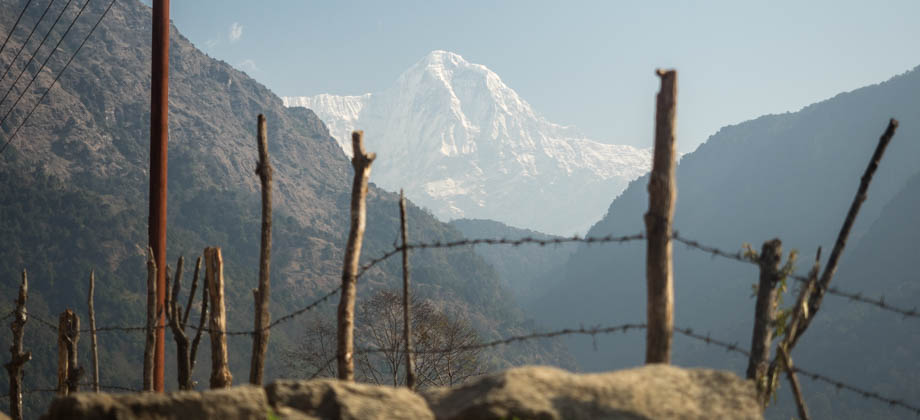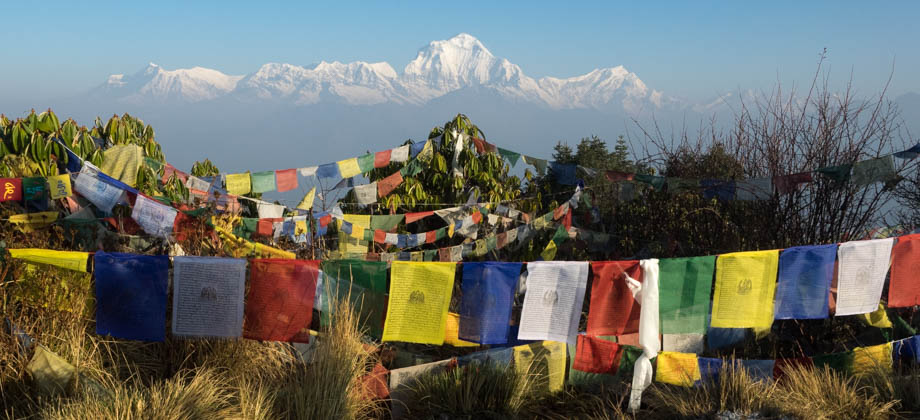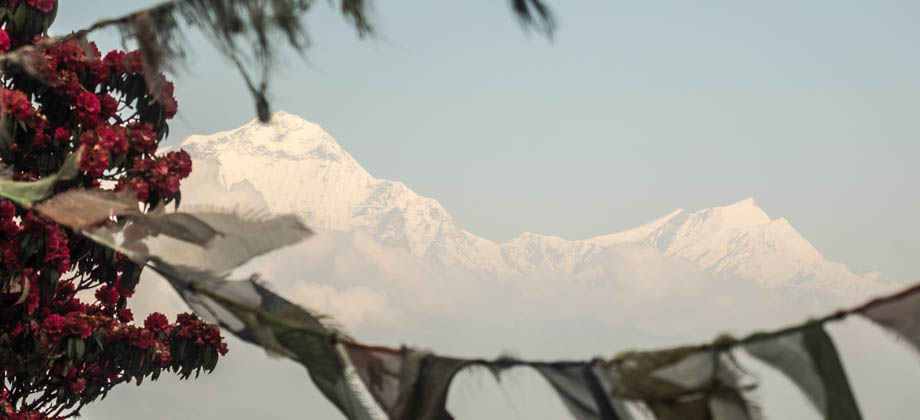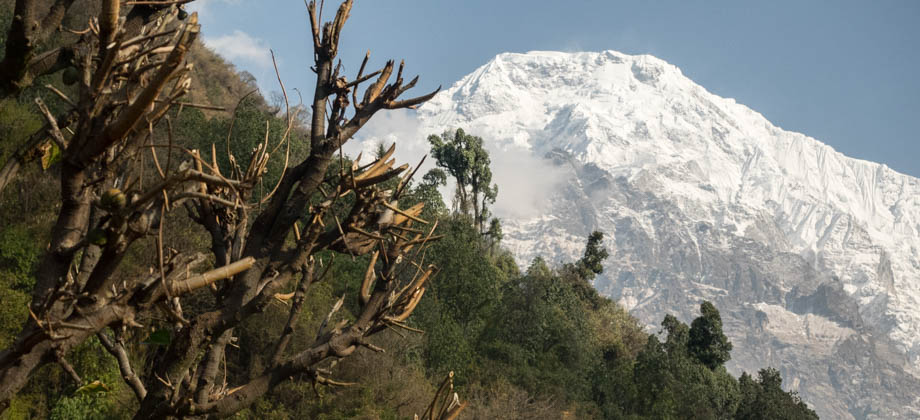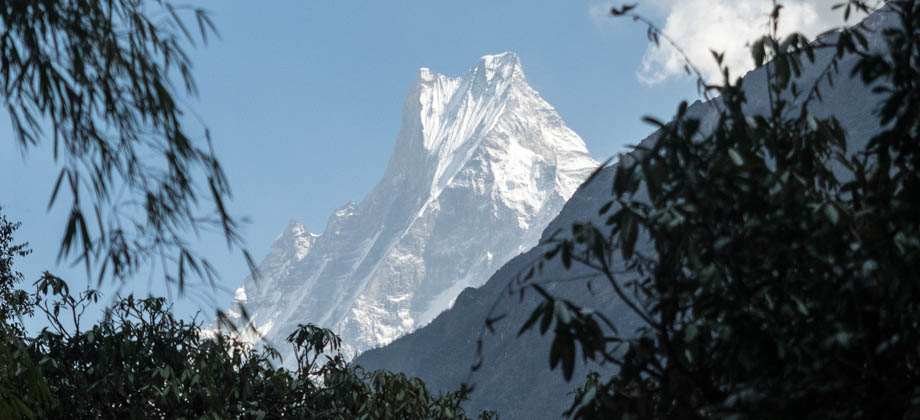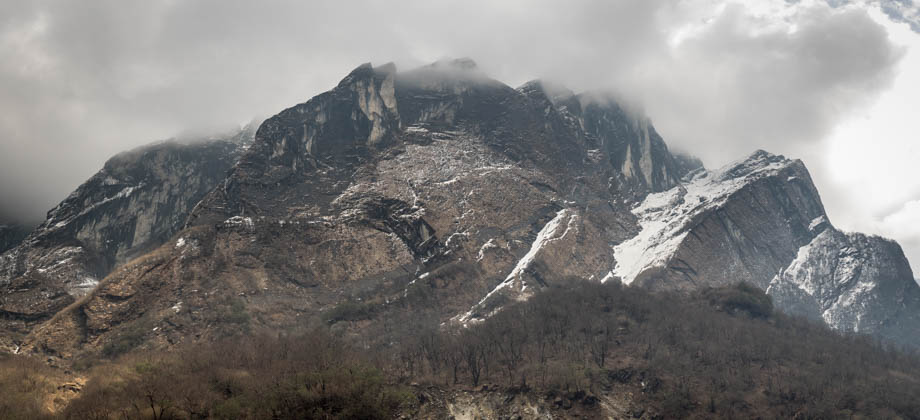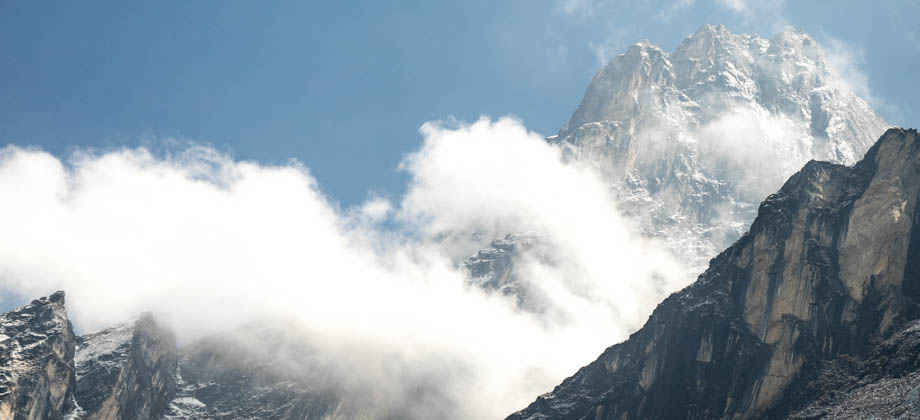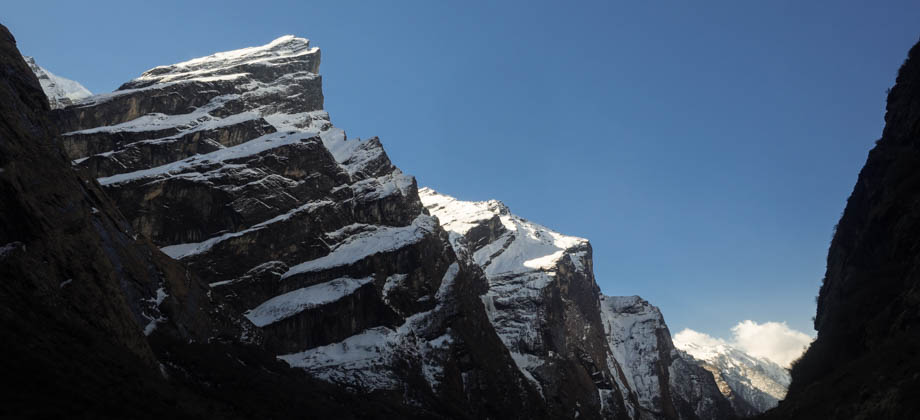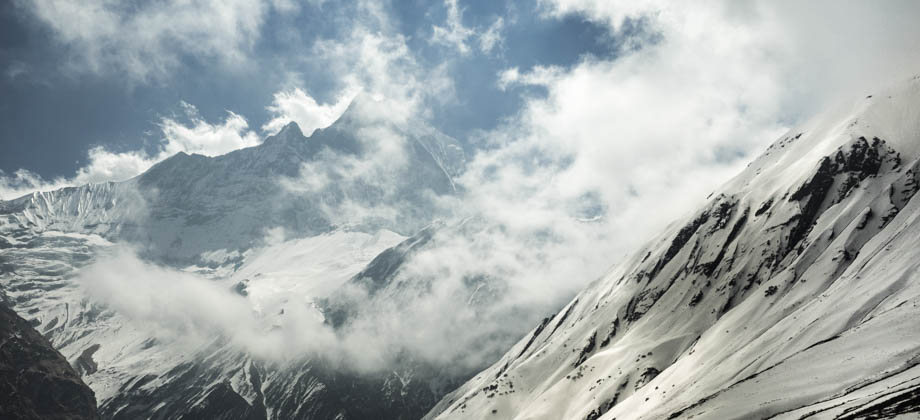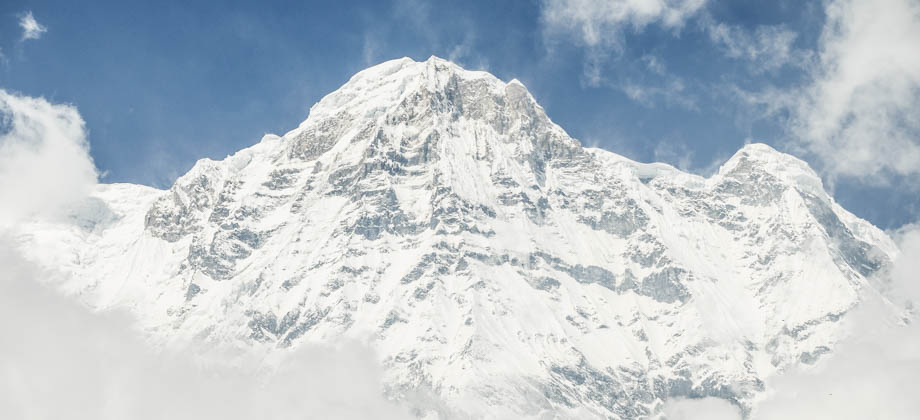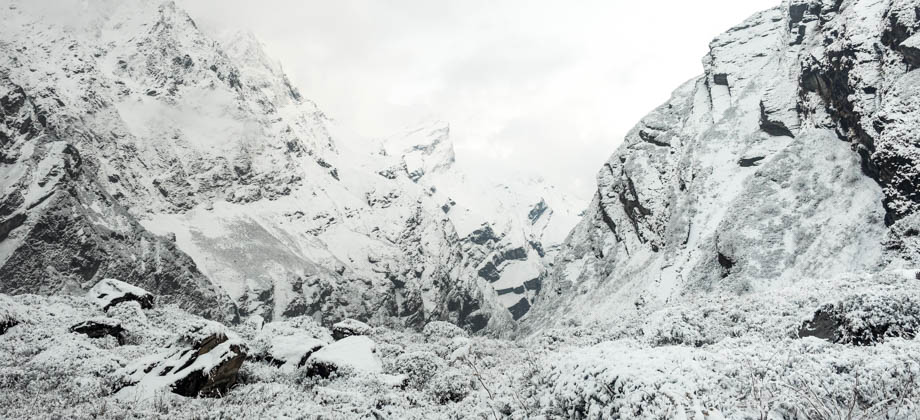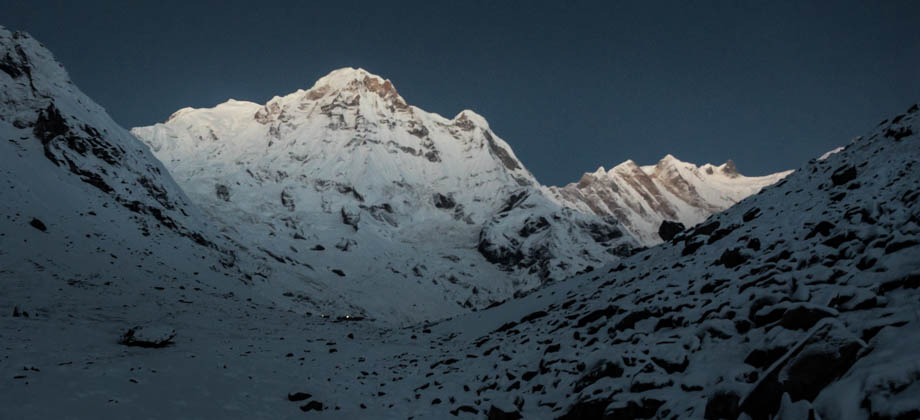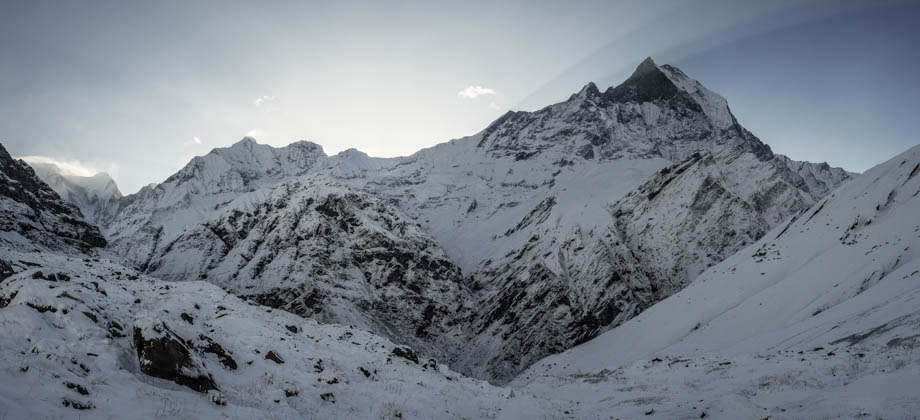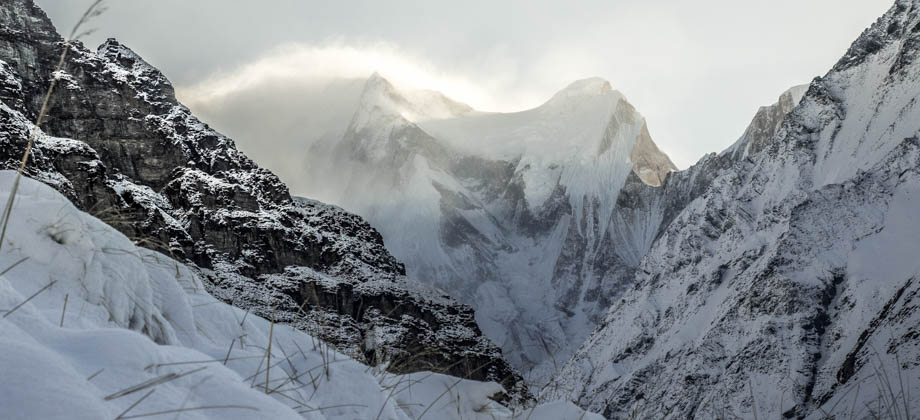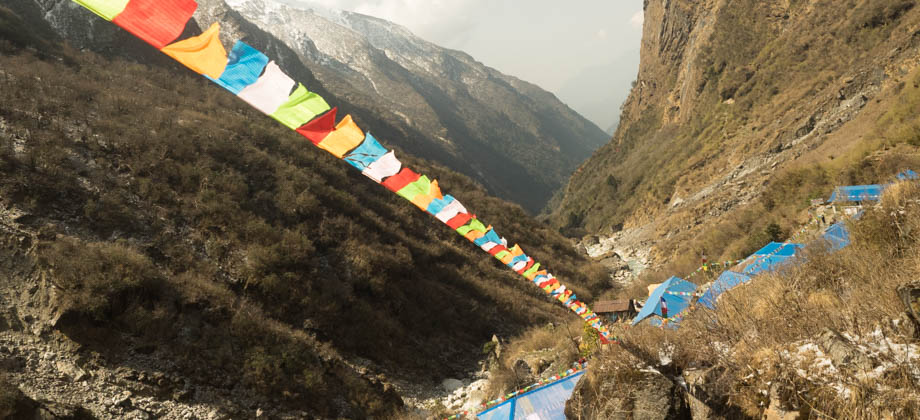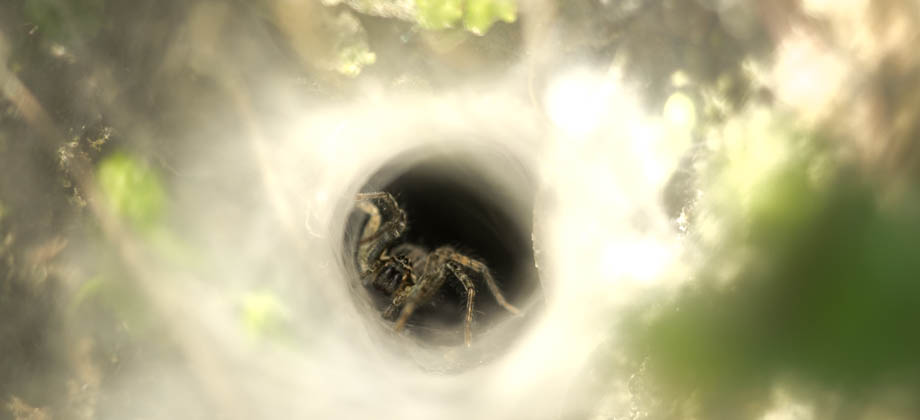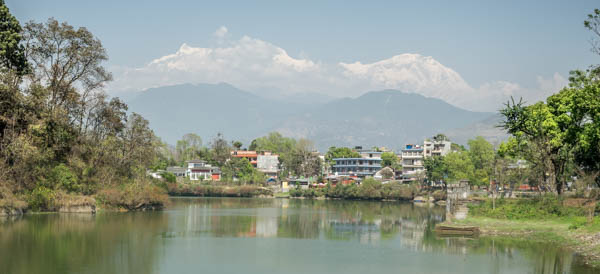ABC Day 02 - Nayapul to Ulleri
Nayapul

I woke up fairly fresh, after having recovered from a short bout of fever from the night before--a quick and 'gentle' reminder of the importance of good hygiene. After a quick discussion, we had decided that it might be better to just hire a taxi for the 2-hour journey to Nayapul, as my stomach was still feeling a little unsettled and a stomach-churning bus ride might not have been the best idea.
The price of the tiny 800cc Suzuki taxi also did not seem too exorbitant, but that was only the case after it was split amongst the three of us (
NPR2000/3).
Getting There
Buses head towards Nayapul fairly frequently, roughly every 20 minutes or so, and can be boarded either from the Baglung bus station or from the 'zero kilometre' stop where the Pokhara-Baglung Highway begins. 'Zero kilometre' is 2 kilometres away from Lakeside so is not much of a walk, but if you would rather not walk there, taxis can also bring you to the bus stop for around NPR200. The bus journey from Pokhara to Nayapul should take under 2 hours and can cost between NPR110-200.
The views of magnificent Machapuchare (
elevation : 6997 m), a mountain that I feel is rivaled only by
Ama Dablam (
elevation : 6812 m) in its sheer splendour, was locked on the horizon for most of the journey. I found it hard to draw my eyes away from Machapuchare, and was snapped out of my reverie only by occasional bouts of conversation, or jolted out of it when the car met the large sections of road that were under construction.
The town of Nayapul (
elevation : 1070 m) that I initially glimpsed looked to be a tiny settlement of shacks, as well as a small cement structure that functioned as a bus stop by the side of the road. Lying just beyond however, further down the small windy 'jeep' road that lead to the Dhoti Khola Bailey bridge, was a village that consisted of a smattering of buildings, that included a small pharmacy as well as a convenience store. We stopped just before the TIMS checkpoint to have lunch (dhal bhat,
NPR400) to fuel us up -
dhal bhat power, 24 hours - for the trek ahead.
It was 12:30 by the time we set off from the TIMS checkpoint, and we followed the road that ran parallel to the Modi Khola (
'khola' means river in Nepali). The road led to the metal bridge that marked the outskirts of Birethanti (
elevation : 1025 m), and the ACAP checkpoint right after. The checkpoint was located at a junction, with the right branch leading towards Chimrong and Sewai, and the dusty road that I would end up walking down more than a week later.
 The huge flower of the red-silk cotton tree (Bombax ceiba), also known as 'Simal tree'
The huge flower of the red-silk cotton tree (Bombax ceiba), also known as 'Simal tree'
There were a multitude of signs here that pointed the way to
Poon Hill. We followed them, turning left and down narrow cobbled alleyways that squeezed past small stores that sold maps and souvenirs. The whole scene reminded me of the small town of
Lukla, and evoked memories of my trek to
EBC several years earlier. All my thoughts were rudely interrupted when the cobbled alleyway suddenly spat us us back out onto the ruined, dusty dirt road.
The dirt road climbed gradually, and once again ran parallel to the Modi Khola. The cascades and the occasional waterfall on our left gave us something pleasant to look at, at least during the times when we weren't bowing our heads low and covering our mouths in vain attempts to escape the clouds of dust that were kicked up by the 'jeeps' that whizzed by. We were given a break three kilometres in, when a left turning took us off the road and back to the trail once again.

After crossing a small bridge that spanned a branch of the Modi Khola, we followed tunnel-like cobbled lanes that were lined with quirky stone walls. The lane lead right to the small village of Lumduwali (4.9 km mark), which basically consisted of a few houses that lay right by the banks of the Modi Khola. The trail was lined with wheat fields
(Triticum sp.), which had to be watched and guarded against marauding bands of grey langurs
(Semnopithecus schistaceus), and the occasional banana tree
(Musa sp.). It was also fairly exposed at this point and I found the heat to be searing, a marked contrast to how I had felt the night before.
 The cannabis plant (Cannabis sativa), quite literally a 'weed' in Nepal
The cannabis plant (Cannabis sativa), quite literally a 'weed' in Nepal


 After crossing a small bridge that spanned a branch of the Modi Khola, we followed tunnel-like cobbled lanes that were lined with quirky stone walls. The lane lead right to the small village of Lumduwali (4.9 km mark), which basically consisted of a few houses that lay right by the banks of the Modi Khola. The trail was lined with wheat fields (Triticum sp.), which had to be watched and guarded against marauding bands of grey langurs (Semnopithecus schistaceus), and the occasional banana tree (Musa sp.). It was also fairly exposed at this point and I found the heat to be searing, a marked contrast to how I had felt the night before.
After crossing a small bridge that spanned a branch of the Modi Khola, we followed tunnel-like cobbled lanes that were lined with quirky stone walls. The lane lead right to the small village of Lumduwali (4.9 km mark), which basically consisted of a few houses that lay right by the banks of the Modi Khola. The trail was lined with wheat fields (Triticum sp.), which had to be watched and guarded against marauding bands of grey langurs (Semnopithecus schistaceus), and the occasional banana tree (Musa sp.). It was also fairly exposed at this point and I found the heat to be searing, a marked contrast to how I had felt the night before.




